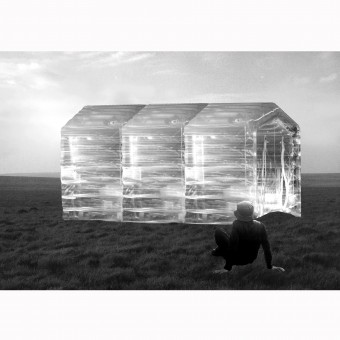minimum post disaster dwelling Post Disaster House by altro_studio |
Home > Winners > #35348 |
 |
|
||||
| DESIGN DETAILS | |||||
| DESIGN NAME: minimum post disaster dwelling PRIMARY FUNCTION: Post Disaster House INSPIRATION: house is like a dress that is possible to wear UNIQUE PROPERTIES / PROJECT DESCRIPTION: transparent modular simply small house that is also very liight OPERATION / FLOW / INTERACTION: - PROJECT DURATION AND LOCATION: There is not one location, invisible house is like an address that goes with individual. FITS BEST INTO CATEGORY: Building Materials and Construction Components Design |
PRODUCTION / REALIZATION TECHNOLOGY: The structure, entirely transparent and aligned with a traditional house style, is based on the principle of modulation. In fact, it is composed of three inflatable elements measuring 2.50m. length, 2,30m. height and 1.5 m. thickness. Modules, anchored on the ground by a system made of steel platforms, are assembled together through zip closings, and set in such a way as to prevent that water sooks into the walls. Once the length of the house has been determined, each module is concluded in non-inflatable plugging panels, that can contain a door or window as needed. These last elements themselves, which allow for the ventilation of the internal space, are characterized by a side zip closing system. We think to provide the structure with elements that would also be inflatable and transparent, to respond to the project intentions: armchairs, sofas, beds, tables, showers etc. Electric energy will be provided by the use of amorphous silicon modules, set on the inclined external surface south oriented by means of a system of prefabricated zip closings that will need to be prefabricated, as indicated in the project. SPECIFICATIONS / TECHNICAL PROPERTIES: House size: 10 mq TAGS: temporary house, transparent house, post disaster house, modular structure RESEARCH ABSTRACT: altro_studio’s research Our architecture can be defined experimental that is we experiment the impact a particular space has on people. Those effects, mainly related to the phenomenological and perceptive aspect, as Merleau Ponty meant, take their inspiration from a series of phenomena inherent to the contemporary reality that influence the conception of the living space by changing the individual behaviour living space is meant both public and private). We are talking about phenomena permeating the urban area (mobility, speed, complexity, etc…), natural phenomena (desertification, floods, earthquakes), or events concerning the whole world which, even interacting with different cultures and races, all share common elements underlined by terms such as information, consumerism, emigration, globalizatio. Our research is therefore intended as a possible response to a series of events, or, in some cases, rather like predictions sometimes approaching utopian solutions. We often wondered how it was possible to reach abstract solutions, forecasting future whether immediate, even starting from real elements. The answer lies in what we mean by ‘real’ talking about a specific phenomenon. Moreover going beyond the event itself, that is pushing the phenomenon to its limits, new conditions, completely apart from reality, arise. Given that you can say that we are working on extreme spaces, which set apart the architectural rules, spaces according to which the concept of phenomenon is influenced by some fundamental philosophical theories (Foucault, Deleuze, Merleau Ponty) based on the connection environment-subject- CHALLENGE: idea is based on nomadic architecture concept. in this case house must be light, tranparent, for to see all the world. ADDED DATE: 2014-06-22 10:47:00 TEAM MEMBERS (1) : IMAGE CREDITS: altro_studio, 2014. |
||||
| Visit the following page to learn more: https://www.altro-studio.com, www.altro-studio.it | |||||
| AWARD DETAILS | |
 |
Minimum Post Disaster Dwelling Post Disaster House by Altro_studio is Winner in Social Design Category, 2014 - 2015.· Read the interview with designer altro_studio for design minimum post disaster dwelling here.· Press Members: Login or Register to request an exclusive interview with altro_studio. · Click here to register inorder to view the profile and other works by altro_studio. |
| SOCIAL |
| + Add to Likes / Favorites | Send to My Email | Comment | Testimonials | View Press-Release | Press Kit | Translations |
| COMMENTS | ||||||||||||
|
||||||||||||
Did you like Altro_studio's Social Design?
You will most likely enjoy other award winning social design as well.
Click here to view more Award Winning Social Design.








